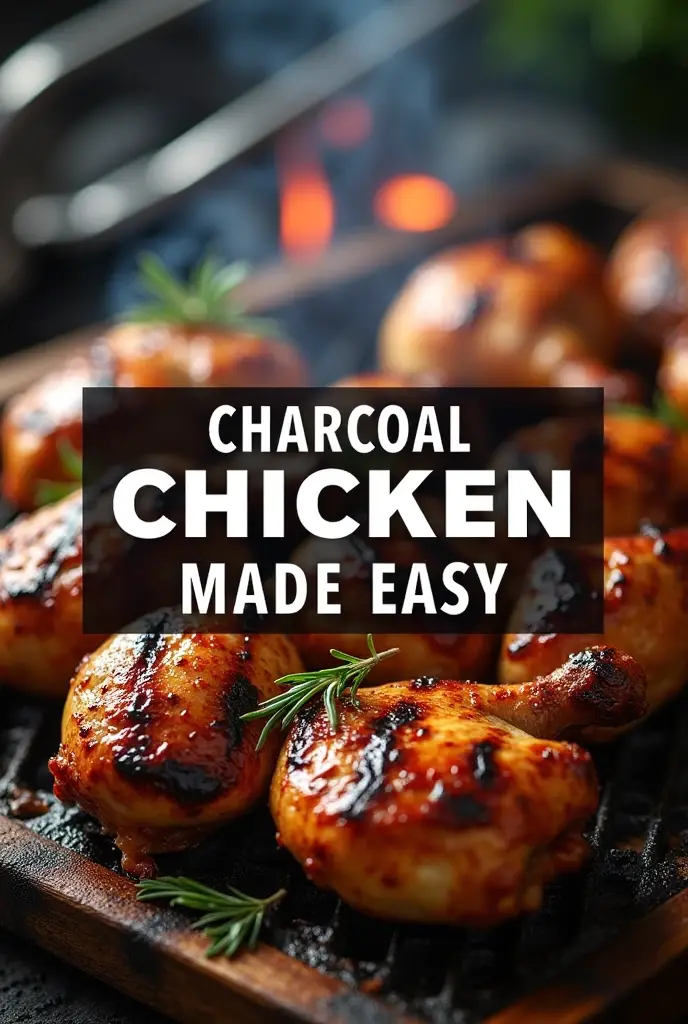Nothing beats the smoky, juicy flavor of charcoal-grilled chicken. Cooking chicken over charcoal adds a depth of flavor that’s hard to achieve with other methods. This Charcoal Chicken Made Easy recipe guides you through a simple process to make perfectly grilled chicken at home, whether you’re using a backyard charcoal grill or a small tabletop setup.
Ingredients
- 2 pounds (900g) chicken pieces (legs, thighs, or breasts)
- 3 tablespoons olive oil
- 2 tablespoons soy sauce
- 2 tablespoons lemon juice
- 2 cloves garlic, minced
- 1 teaspoon smoked paprika
- 1 teaspoon ground black pepper
- 1 teaspoon salt
- 1/2 teaspoon chili powder (optional, for spice)
- Fresh herbs for garnish (optional)
Preparation Steps
Step 1: Prepare the Marinade
- In a bowl, combine olive oil, soy sauce, lemon juice, minced garlic, smoked paprika, black pepper, salt, and chili powder.
- Mix well to create a uniform marinade.
Step 2: Marinate the Chicken
- Place the chicken pieces in a large resealable bag or shallow dish.
- Pour the marinade over the chicken, making sure each piece is evenly coated.
- Refrigerate for at least 1 hour, or up to 4 hours for deeper flavor.
Step 3: Prepare the Charcoal Grill
- Light the charcoal in your grill and let it burn until the coals are covered with white ash (about 15–20 minutes).
- Spread the coals evenly for direct heat grilling.
Step 4: Grill the Chicken
- Place the chicken pieces on the grill over medium heat.
- Cook for 6–8 minutes per side (depending on thickness), turning occasionally to avoid burning.
- Check the internal temperature; it should reach 165°F (75°C) for safe consumption.
Step 5: Serve
- Remove chicken from the grill and let it rest for 5 minutes.
- Garnish with fresh herbs if desired.
- Serve with grilled vegetables, rice, or your favorite sides.
Tips for the Best Charcoal Chicken
- Keep a spray bottle of water nearby to control flare-ups.
- For extra smoky flavor, add soaked wood chips to the charcoal.
- Avoid overcrowding the grill to ensure even cooking.
This Charcoal Chicken Made Easy recipe delivers tender, juicy, and smoky chicken that’s perfect for outdoor gatherings or a cozy backyard dinner. Simple ingredients and a little patience bring out the best in this classic grilled favorite.
Have you given our recipe a try?
0.0
0.0 out of 5 stars (based on 0 reviews)
Excellent0%
Very good0%
Average0%
Poor0%
Terrible0%
